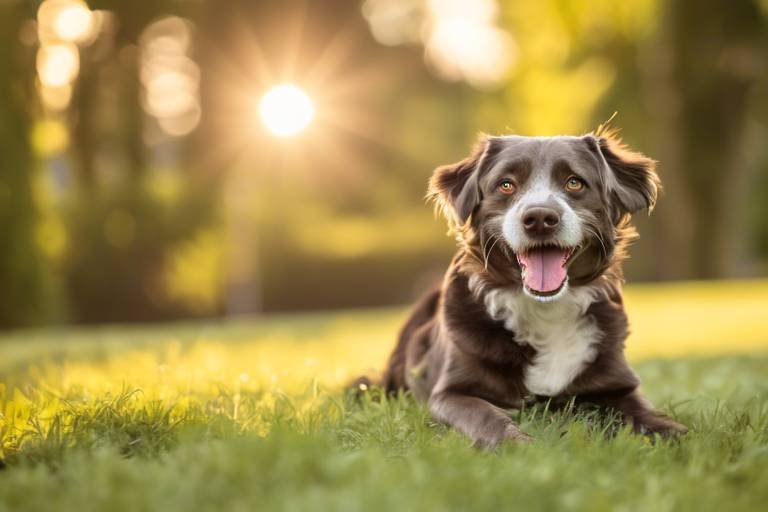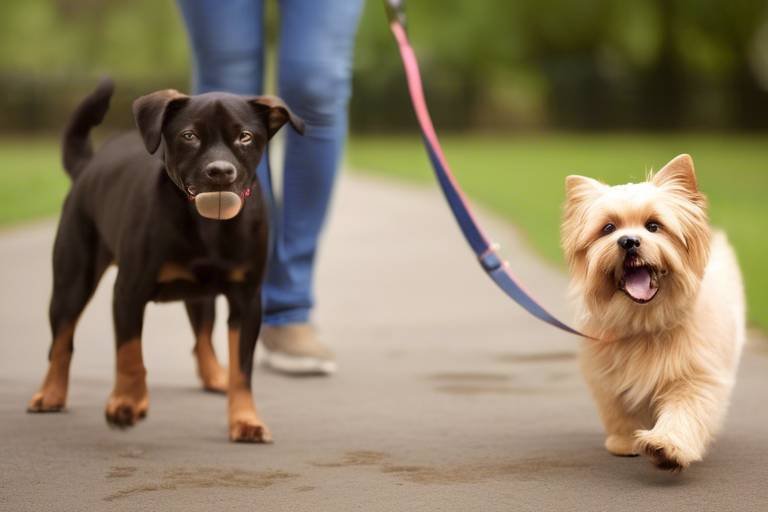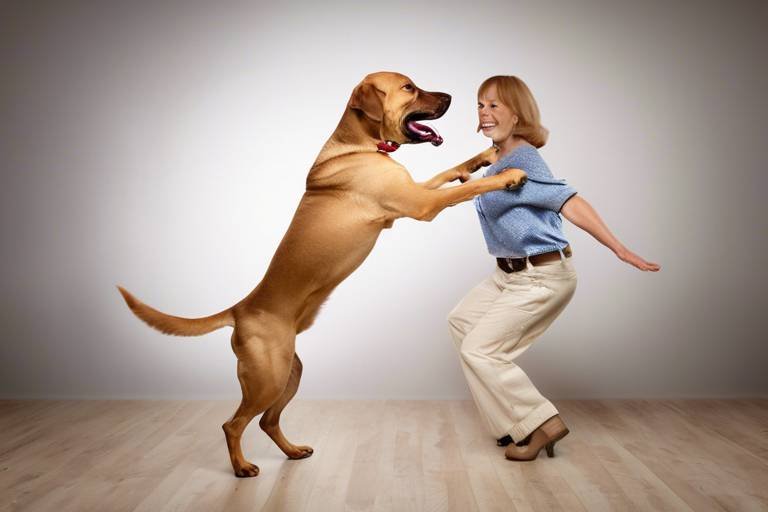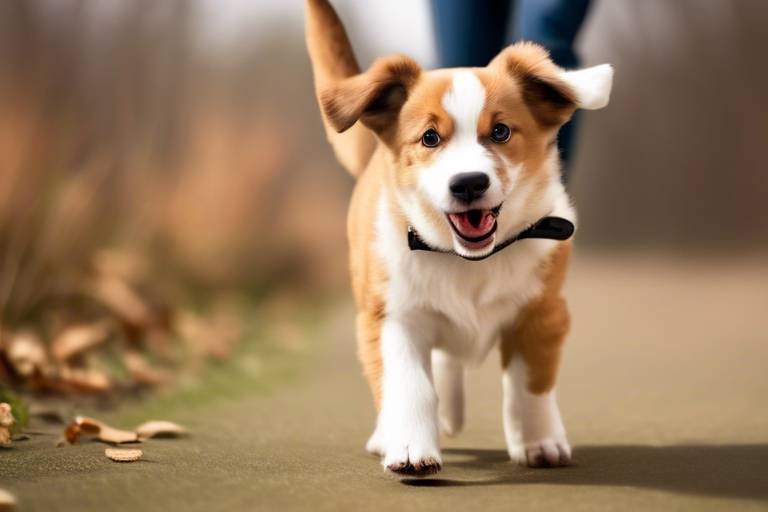The Benefits of Training for Senior Pets
As our furry friends age, they deserve the best care we can provide, and one of the most impactful ways to enhance their quality of life is through training. You might be wondering, "Why should I train my senior pet?" Well, the benefits are numerous and can significantly improve their physical and mental well-being. Training is not just for puppies; it’s a powerful tool that can help senior pets thrive, keeping them engaged, active, and happy. Imagine your beloved pet, not just lounging around but actively participating in activities that stimulate their mind and body. It’s a win-win situation for both you and your furry companion!
Training provides crucial mental stimulation for senior pets, helping to keep their minds sharp and engaged. Just like humans, pets can experience cognitive decline as they age, but engaging them in activities like learning new commands can significantly reduce these effects. Think of it as a workout for their brains! Not only does it keep them mentally fit, but it also improves their overall mental health. Activities can include simple commands like "sit," "stay," or even fun tricks that challenge them. The joy of mastering a new skill can boost their confidence and bring a sparkle back to their eyes.
Regular training sessions encourage physical activity, which is essential for maintaining a healthy weight and preventing obesity-related issues in senior pets. Just like we need to stay active to maintain our health, our pets do too! Exercise can also help alleviate arthritis and joint pain, making daily movements easier and more comfortable for them. A simple routine of gentle exercises can make a world of difference. For instance, incorporating short walks or light play into your training sessions can promote mobility and flexibility while ensuring your pet's safety and comfort.
When it comes to senior pets, it’s essential to incorporate gentle exercises into their training routines. Think of these exercises as a soft embrace for their bodies; they should feel good and not be overwhelming. Activities like short walks, light fetch games, or even simple stretching can be incredibly beneficial. These exercises not only help maintain their physical health but also serve as a bonding experience. Just as we enjoy a leisurely stroll with friends, our pets cherish these moments with us.
Understanding each pet's unique mobility limitations is crucial. Some pets may not be able to perform high-energy activities, and that’s perfectly okay! Tailoring training sessions to fit their capabilities ensures that exercises are effective yet manageable. For example, if your senior dog has arthritis, focusing on low-impact activities can help maintain their strength without causing discomfort. It’s about finding the right balance and ensuring that your pet feels supported and loved during their training journey.
Progressing slowly in training is key to helping senior pets adapt without feeling overwhelmed. Just like us, they can become anxious or frustrated if pushed too hard too quickly. Gradual progression fosters a positive experience that encourages continued participation and learning. Start with simple commands and gradually introduce new challenges as they become more comfortable. Celebrating small victories along the way not only boosts their confidence but also strengthens the bond between you and your beloved pet.
Training sessions can strengthen the bond between pets and their owners. Engaging in activities together fosters trust and communication, enhancing the overall relationship. Imagine the joy of seeing your pet's face light up when they successfully complete a command or trick! These moments create lasting memories and deepen the connection you share. Plus, the more time you spend together during training, the more you learn about each other’s personalities and preferences.
Training can also help mitigate common behavioral issues in senior pets, such as anxiety, aggression, or incontinence. By addressing these issues through training, you can create a more harmonious living environment for both pets and owners. For instance, if your pet tends to become anxious during thunderstorms, training them to respond to commands can help distract and calm them during stressful times. It’s all about creating a safe space where your pet feels secure and understood.
Using positive reinforcement techniques during training encourages good behavior while building confidence in senior pets. This approach fosters a supportive atmosphere for learning. Instead of punishing unwanted behaviors, reward your pet for good actions. Treats, praise, and affection can go a long way in motivating your furry friend to learn and adapt. It’s like throwing a party every time they do something right, which makes learning fun for both of you!
Being attentive to behavioral changes in senior pets allows owners to adapt their training methods and address potential health concerns. If your pet suddenly becomes less active or more irritable, it could signal underlying health issues. By staying alert and responsive to these changes, you can ensure a proactive approach to their well-being. Remember, being a pet owner means being their advocate, and training is a powerful tool in that journey.
- Is it too late to train my senior pet? No, it’s never too late! Senior pets can learn new tricks and commands at any age.
- How long should training sessions be? Keep sessions short and sweet, around 5-10 minutes, to prevent fatigue.
- What if my pet doesn’t respond to training? Be patient and adjust your methods. Some pets may require more time or different techniques.

Enhancing Mental Stimulation
Training provides crucial mental stimulation for senior pets, helping to keep their minds sharp and engaged. Just like humans, our furry friends can experience a decline in cognitive function as they age. This is where training comes into play, acting as a mental gym that keeps their brains fit and active. Imagine your pet's mind as a sponge; the more you engage it, the more it absorbs and retains. Activities like learning new commands or even simple tricks can significantly reduce cognitive decline and improve overall mental health.
Engaging in training sessions not only serves as a fun activity for your senior pet but also provides them with a sense of purpose. Think about it: when they learn something new, they feel accomplished, and that boost in confidence can be incredibly beneficial. It’s like giving them a little mental trophy for their efforts! Moreover, these training sessions can help alleviate boredom, which is often a precursor to behavioral issues. A stimulated mind is a happy mind, and a happy pet is a joy to have around.
To further enhance the mental stimulation experience, consider incorporating a variety of activities into your training routine. Here are some ideas:
- Interactive Toys: Use puzzle toys that require your pet to think and strategize to get a treat.
- New Commands: Teach them new commands or tricks that challenge their thinking, like “spin” or “play dead.”
- Hide and Seek: Play games where you hide treats around the house for them to find, stimulating their sense of smell and problem-solving skills.
These activities not only promote mental engagement but also create opportunities for bonding with your pet. It’s a win-win situation! The more time you spend training and playing together, the stronger your bond becomes. Plus, it’s a great way to observe any changes in their behavior or cognitive abilities, allowing you to adapt your training methods as needed.
In conclusion, enhancing mental stimulation through training is essential for the well-being of senior pets. It keeps their minds sharp, boosts their confidence, and strengthens the bond between you and your beloved companion. So, grab those treats, get ready for some fun, and watch your senior pet thrive!
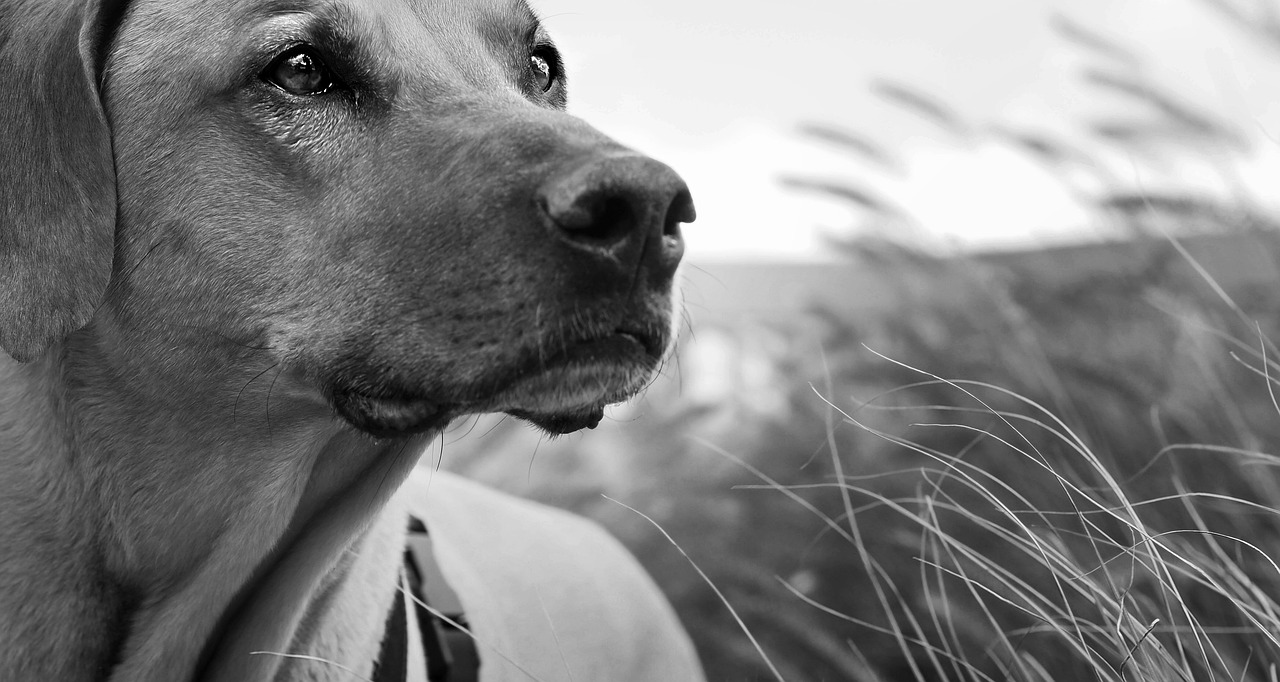
Improving Physical Health
When it comes to our beloved senior pets, their physical health is paramount. Just like us, as pets age, they may face a host of health challenges that can be alleviated through regular training and exercise. Think of training as a vital ingredient in the recipe for a long, happy life. By engaging in consistent training sessions, we not only keep their minds sharp but also encourage them to stay active. This is crucial because maintaining a healthy weight is essential for preventing obesity-related issues, which can be a significant concern for older pets.
Regular physical activity through training can help combat various ailments that senior pets might experience, such as arthritis and joint pain. Imagine your pet as a car; just like a car needs regular maintenance to function optimally, our pets require exercise to keep their bodies in top shape. By incorporating gentle exercises into their daily routine, we can ensure they remain mobile and flexible. This is not just about keeping them fit; it’s about enhancing their quality of life.
So, what does this look like in practice? Gentle exercises can include activities like short walks, light play sessions, or even simple stretching routines. These activities can be easily integrated into training sessions, allowing for a mix of fun and fitness. For example, a leisurely stroll around the block not only gets their heart rate up but also provides an opportunity for mental stimulation as they explore their surroundings. It’s like taking them on a mini-adventure every day!
Every senior pet has its unique set of mobility limitations, and understanding these is key to tailoring effective training sessions. If your furry friend has trouble with certain movements, it’s essential to adapt your approach. For instance, if your dog struggles with jumping, you might focus on low-impact activities that promote strength without causing strain. This personalized approach ensures that each exercise is not only effective but also manageable and safe for your pet.
Another important aspect of training senior pets is the concept of gradual progression. Just like us, older pets can feel overwhelmed if pushed too hard or too fast. By slowly increasing the intensity and duration of their training sessions, we create a positive experience that encourages them to participate willingly. Think of it as building a bridge; you wouldn’t want to rush the construction and risk it collapsing. Instead, take your time to ensure it’s sturdy and reliable, allowing your pet to cross it with confidence.
In conclusion, improving the physical health of senior pets through training is not just beneficial; it’s essential. By integrating gentle exercises, adapting to mobility limitations, and progressing gradually, we can significantly enhance their overall well-being. Remember, a happy pet is a healthy pet, and investing time in their physical health today will pay off in countless tail wags and purrs tomorrow!
- How often should I train my senior pet?
Training sessions should be short and frequent, ideally lasting between 5 to 15 minutes, a few times a day. - What types of exercises are best for senior pets?
Gentle walks, swimming, and low-impact play are excellent choices for keeping senior pets active. - Can training help with my pet's behavioral issues?
Yes! Training can address behavioral problems by providing structure and mental stimulation. - Should I consult a vet before starting a training program?
Absolutely! A veterinarian can provide insights tailored to your pet's specific health needs.
Incorporating Gentle Exercises
When it comes to our beloved senior pets, incorporating gentle exercises into their daily routine is not just beneficial; it's essential! As pets age, their energy levels may decrease, and their bodies may not be as agile as they once were. This is where gentle exercises come into play, acting as a bridge to maintain their physical health without overwhelming them. Think of it as a stroll through the park versus a marathon; both can be enjoyable, but one is far more suitable for our aging companions.
Gentle exercises can include activities like short walks, light play sessions, or even simple stretching routines. These activities not only promote mobility and flexibility but also provide an opportunity for mental stimulation. For instance, a 15-minute walk around the block can be a delightful adventure for a senior dog, allowing them to sniff around and explore their environment while getting some much-needed exercise. The key is to keep these sessions short and enjoyable, so your pet looks forward to them rather than dreads them.
Additionally, incorporating gentle exercises into training routines can be done in a variety of ways. You might consider:
- Using soft toys for light play, encouraging your pet to engage without straining.
- Setting up a small obstacle course in your living room with cushions and toys, allowing your pet to navigate through at their own pace.
- Practicing simple commands that involve movement, such as “sit” and “stay,” followed by a gentle reward.
It's also crucial to adapt these exercises to your pet's unique needs. For example, if your senior pet has mobility limitations, consider using a harness for support during walks or engaging in water therapy, which can be a fantastic low-impact exercise. Always keep an eye on your pet's energy levels and comfort, and don't hesitate to consult your veterinarian for tailored exercise recommendations.
Remember, the goal of incorporating gentle exercises is to keep our senior pets active and engaged, enhancing their quality of life while ensuring their safety and comfort. With a little creativity and patience, you can turn exercise into a fun and rewarding experience for both you and your furry friend!
Q: How often should I exercise my senior pet?
A: It's generally recommended to engage your senior pet in gentle exercise for about 15-30 minutes a day, divided into shorter sessions to avoid fatigue.
Q: What types of exercises are best for senior pets?
A: Gentle walks, light play, swimming, and basic stretching exercises are ideal for senior pets. Always choose activities that suit their physical capabilities.
Q: Should I consult a vet before starting an exercise routine for my senior pet?
A: Yes, it's always a good idea to consult with your veterinarian to create a safe and effective exercise plan tailored to your pet's health needs.
Adapting to Mobility Limitations
When it comes to our beloved senior pets, understanding their mobility limitations is crucial for creating a positive training experience. Just like us, as pets age, they may face challenges such as reduced joint flexibility or muscle strength. This means that what worked for them in their younger years might not be suitable anymore. So, how can we adapt our training sessions to ensure they are both effective and safe for our furry friends?
First and foremost, it’s essential to observe your pet closely. Look for any signs of discomfort or fatigue during activities. For instance, if your dog used to enjoy long walks but now seems hesitant or struggles to keep up, it might be time to shorten those walks or switch to a more gentle form of exercise. Incorporating low-impact activities can make a world of difference. Consider options like:
- Shorter walks: Instead of a half-hour stroll, try 10-15 minute walks at a leisurely pace.
- Interactive play: Engage in gentle games that don’t require too much running or jumping, like fetch with a soft toy.
- Swimming: If accessible, swimming is an excellent way to exercise without putting stress on their joints.
Moreover, using the right equipment can greatly enhance the training experience for senior pets. For example, a well-fitted harness can provide better support than a traditional collar, especially for pets with neck or back issues. Additionally, consider using non-slip mats at home to help your pet navigate safely, reducing the risk of falls and injuries.
Remember, adapting to their limitations doesn’t mean reducing their quality of life. Instead, it’s about finding a new rhythm that respects their needs while still encouraging activity. Gradually introducing new exercises can also help them adjust without feeling overwhelmed. Think of it like a dance; you wouldn’t want to rush through the steps, right? Instead, take your time, enjoy the process, and let your pet lead the way at their own pace.
As you tailor your training approach, keep in mind that patience is key. Celebrate small victories and be prepared to modify your methods as needed. Each pet is unique, and what works for one may not work for another. By being attentive and flexible, you’ll not only enhance their physical capabilities but also strengthen the bond you share.
Q: How can I tell if my senior pet is in pain during training?
A: Look for signs such as reluctance to participate, whining, limping, or changes in behavior. If you notice any of these signs, it may be best to consult your veterinarian.
Q: What types of exercises are safe for senior pets?
A: Gentle activities like short walks, light play, and swimming are generally safe. Always consult with your vet to tailor a program that suits your pet’s specific needs.
Q: How often should I train my senior pet?
A: Short, frequent sessions are more beneficial than long, exhausting ones. Aim for 5-10 minute sessions a few times a week, gradually increasing as your pet becomes more comfortable.
Q: Can training help with my pet's anxiety?
A: Yes! Training can provide mental stimulation and structure, which may help alleviate anxiety. Positive reinforcement techniques can also build confidence in anxious pets.
Gradual Progression in Training
When it comes to training senior pets, gradual progression is key. Just like us, our furry friends can feel overwhelmed if we push them too hard or too fast. Imagine trying to run a marathon without any training; it would be a struggle, right? The same goes for our beloved older pets. They need a training routine that respects their age and physical capabilities.
Starting with simple commands and short training sessions can make a world of difference. Begin with just a few minutes each day, focusing on one command or trick. As your pet becomes more comfortable, you can gradually increase the duration and complexity of the training. This approach not only helps them learn but also keeps their spirits high and their minds engaged. Think of it as building a strong foundation; without it, everything else can crumble.
It's also important to pay attention to your pet's body language. If they seem tired or uninterested, it might be a sign to take a step back. Remember, training should be a fun and rewarding experience for both you and your pet. Incorporating positive reinforcement—like treats or praise—can make each session something they look forward to. This way, training becomes less of a chore and more of a bonding experience.
To help you visualize how to implement gradual progression, here's a simple table outlining a potential training schedule:
| Week | Focus Command | Duration (minutes) | Notes |
|---|---|---|---|
| 1 | Sit | 5 | Use treats for motivation |
| 2 | Stay | 7 | Increase distance gradually |
| 3 | Come | 10 | Practice in a safe, enclosed area |
| 4 | Down | 10 | Combine with previous commands |
By following this gradual progression, you not only help your senior pet learn effectively but also ensure that they remain enthusiastic about the training process. It's about creating a positive environment where they feel safe to explore and learn at their own pace. So, take a deep breath, be patient, and watch as your bond with your furry companion grows stronger with each training session!
- How long should training sessions last for senior pets? Ideally, keep sessions between 5 to 15 minutes, depending on your pet's stamina and interest.
- What types of commands are best for senior pets? Start with basic commands like "sit," "stay," and "come." These are simple yet effective for building communication.
- How can I tell if my pet is overwhelmed during training? Watch for signs like yawning, turning away, or lying down. If they show these signs, it’s best to end the session early.
- Is it necessary to use treats during training? While treats can be very motivating, verbal praise and petting can also be great rewards!
Building Stronger Bonds
Training is not just about teaching your senior pet new tricks; it’s about building a deeper connection with them. Imagine this: every time you engage in a training session, it’s like going on a mini-adventure together. You’re not just the teacher; you’re a partner in this journey of learning and discovery. This shared experience can significantly enhance the bond between you and your furry friend.
When you dedicate time to training, you create a space where trust can flourish. Your senior pet looks to you for guidance, and by responding with patience and encouragement, you reinforce their confidence. This is especially important for older pets who may have experienced changes in their environment or health. They need to feel secure, and training can provide that sense of stability. It’s like a warm hug for their hearts!
Moreover, training sessions can be a fantastic way to incorporate play into your routine. Using games and fun activities not only keeps your pet engaged but also makes learning enjoyable. For instance, you can use their favorite toys as rewards or incorporate play into commands like “fetch” or “stay.” This playful approach not only teaches them but also strengthens your bond, as you both share moments of joy and laughter.
Another aspect to consider is the communication that develops through training. As you teach your senior pet new commands, you’re also learning to understand their unique responses and behaviors. This two-way communication fosters a sense of partnership, where both of you are working towards a common goal. It’s like a dance, where you learn to move in sync with each other, creating a beautiful rhythm of trust and understanding.
To further illustrate the benefits of training for bonding, let’s look at some key points:
- Trust Building: Regular training helps your pet trust you more, knowing you’re there to guide them.
- Shared Joy: Engaging in fun activities together creates happy memories and strengthens your relationship.
- Improved Communication: Learning to read each other's cues enhances your understanding of one another.
In conclusion, the act of training your senior pet is a powerful tool for building a stronger bond. It’s an opportunity to connect, communicate, and create lasting memories together. So, the next time you pick up those training treats, remember that you’re not just teaching; you’re enhancing the love and trust that exists between you and your cherished companion.
Q1: How often should I train my senior pet?
A1: It’s best to have short, regular training sessions, ideally 5-10 minutes a few times a week. This keeps it enjoyable and prevents fatigue.
Q2: What if my senior pet struggles with certain commands?
A2: Be patient! Every pet learns at their own pace. Consider breaking down commands into smaller steps or using more enticing rewards.
Q3: Can training help with my pet’s anxiety?
A3: Absolutely! Training can provide structure and predictability, which often helps reduce anxiety in senior pets.
Q4: What types of training are best for older pets?
A4: Focus on gentle, positive reinforcement techniques. Basic commands, tricks, or even scent work can be great options that are both stimulating and fun.

Addressing Behavioral Issues
As our beloved pets age, they may start exhibiting various behavioral issues that can be concerning for both them and their owners. These challenges can range from anxiety and aggression to incontinence and confusion. Understanding these behaviors is crucial for creating a peaceful and harmonious living environment. Training plays a vital role in addressing these issues, as it not only helps manage undesirable behaviors but also promotes a deeper understanding between pets and their owners.
One of the most effective ways to tackle behavioral problems is through positive reinforcement. This technique involves rewarding your pet for good behavior, which encourages them to repeat those actions. For instance, if your senior dog is anxious during thunderstorms, rewarding them with treats or praise when they remain calm can help them associate storms with positive experiences. Over time, this can significantly reduce their anxiety levels. Additionally, implementing a consistent training routine can provide structure and predictability, which is especially comforting for senior pets.
Another important aspect of addressing behavioral issues is recognizing when changes occur. Senior pets may experience shifts in behavior due to health concerns, such as pain or cognitive decline. Being vigilant and observant can help you spot these changes early on. For example, if your once playful cat suddenly becomes withdrawn, it might be time to consult a veterinarian. By adapting your training methods to accommodate their changing needs, you can ensure that your pet feels supported and understood.
Moreover, communication is key in building a strong bond with your senior pet. Training sessions provide an excellent opportunity to enhance this communication. By using clear commands and signals, you can create a language that both you and your pet understand. This not only helps in correcting unwanted behaviors but also strengthens the trust between you two. Remember, a well-trained pet is not just a well-behaved pet; they are also more confident and secure in their environment.
In conclusion, addressing behavioral issues in senior pets requires a combination of patience, understanding, and effective training techniques. By focusing on positive reinforcement, recognizing behavioral changes, and enhancing communication, you can significantly improve the quality of life for your furry friend. Training is not just about obedience; it's about fostering a deeper connection and ensuring that your senior pet feels loved and secure in their golden years.
- What are common behavioral issues in senior pets? Senior pets may experience anxiety, aggression, incontinence, and confusion as they age.
- How can I use positive reinforcement effectively? Reward your pet with treats or praise when they exhibit good behavior to encourage them to repeat those actions.
- When should I consult a veterinarian about behavioral changes? If you notice significant changes in your pet's behavior, such as withdrawal or aggression, it’s best to consult a veterinarian.
- Can training sessions help with my pet's anxiety? Yes! Training sessions can provide structure and positive experiences that can help alleviate anxiety.
Implementing Positive Reinforcement
When it comes to training senior pets, positive reinforcement is not just a technique; it's a philosophy that transforms the training experience into a rewarding journey for both you and your furry friend. Imagine this: instead of punishing mistakes, you celebrate successes, no matter how small. This approach not only makes learning enjoyable for your pet but also builds their confidence and trust in you. Every time your pet performs a desired behavior, whether it's sitting on command or simply coming when called, shower them with praise, treats, or their favorite toy. This creates a positive association that motivates them to repeat the behavior in the future.
Consider the emotional impact of positive reinforcement. Senior pets often face various challenges, from health issues to changes in their environment. They may feel anxious or insecure, and a gentle, supportive training approach can significantly alleviate these feelings. Instead of viewing training as a chore, your pet will see it as a fun activity that strengthens your bond. You might find that a simple “good boy!” or a gentle scratch behind the ears can turn a training session into a delightful experience.
Moreover, positive reinforcement can be tailored to suit each individual pet's needs. For instance, if you have a senior dog who is less mobile, you can reward them with verbal praise or a gentle pat instead of treats. This consideration not only respects their physical limitations but also reinforces their desire to engage in training without the pressure of physical exertion. Keeping training sessions short and sweet is key; this way, your pet remains engaged and eager to learn. Think of it as a delightful game rather than a rigorous task.
Incorporating positive reinforcement into your training routine can lead to remarkable improvements in behavior. For example, if your senior pet tends to bark excessively, instead of scolding them, try rewarding them for being quiet. This not only encourages them to adopt the desired behavior but also fosters a calmer environment at home. Remember, consistency is crucial. Use the same cues and rewards each time to help your pet understand what you expect from them.
To further illustrate the effectiveness of this approach, consider the following table that highlights the benefits of positive reinforcement:
| Benefit | Description |
|---|---|
| Builds Trust | Encourages a trusting relationship between pet and owner. |
| Increases Engagement | Makes training sessions enjoyable, leading to better participation. |
| Reduces Anxiety | Creates a supportive environment that lowers stress levels. |
| Encourages Learning | Promotes a desire to learn new commands and behaviors. |
In conclusion, implementing positive reinforcement in training sessions for senior pets isn't just about teaching them commands; it's about nurturing a loving and supportive relationship. By focusing on rewarding good behavior, you create an atmosphere of trust and joy that will enhance your connection with your beloved pet. So, the next time you embark on a training session, remember to keep it positive, patient, and playful!
Q: Can I use treats for positive reinforcement with my senior pet?
A: Absolutely! Treats can be a great motivator, but make sure they are suitable for your pet's dietary needs and health conditions. Consider using small, healthy treats to avoid weight gain.
Q: How long should training sessions last for senior pets?
A: Short training sessions of about 5-10 minutes are ideal. This keeps your pet engaged without overwhelming them, allowing for effective learning.
Q: What if my senior pet doesn't respond to training?
A: Patience is key. If your pet seems unresponsive, try changing your approach or the rewards you are using. Some pets may need more time to adjust to new commands or routines.
Q: Is positive reinforcement effective for all types of behaviors?
A: Yes, positive reinforcement can be used to address a variety of behaviors, from simple commands to more complex issues like anxiety or aggression. It's all about finding the right rewards and approach for your pet.
Recognizing Behavioral Changes
As our beloved pets age, it's essential to stay vigilant and recognize any behavioral changes that may arise. Just like humans, senior pets can experience shifts in their behavior that might indicate underlying health issues or emotional distress. Paying attention to these changes is not just about being a responsible pet owner; it's about ensuring that our furry friends live their golden years in comfort and happiness.
One of the first signs to watch for is a change in activity levels. If your once playful pup suddenly seems lethargic or disinterested in their favorite games, it may be time to investigate further. Changes in appetite, such as eating less or becoming picky, can also be a red flag. These shifts can indicate dental problems, gastrointestinal issues, or even more serious conditions. A sudden increase in vocalization, like excessive barking or whining, can signal anxiety or discomfort, especially if your pet is trying to communicate something important.
Another crucial aspect to monitor is social behavior. If your pet begins to isolate themselves or shows signs of aggression towards familiar people or other pets, it may indicate pain or cognitive decline. Senior pets may also experience changes in their ability to navigate their environment, leading to confusion or fear. For example, if they start to avoid stairs or struggle with familiar routes, this could point to mobility issues or vision problems.
To assist in recognizing these changes, here are some key behavioral signs to keep an eye on:
- Changes in sleeping patterns, such as increased sleep or restlessness at night.
- Increased tendency to hide or seek solitude.
- Altered grooming habits, including neglecting self-care.
- Changes in bathroom habits, like accidents in the house or straining to urinate.
Being proactive about recognizing these behavioral changes can help you address potential health concerns early on. It's always a good idea to consult with your veterinarian if you notice any of these signs. They can help determine whether these changes are part of the aging process or if they signify a need for further investigation. After all, a happy pet is a healthy pet, and being attentive to their needs ensures they continue to thrive well into their senior years.
Q: What should I do if I notice behavioral changes in my senior pet?
A: It's important to consult with your veterinarian to rule out any underlying health issues. Keeping a journal of the changes can also help your vet understand the situation better.
Q: Are behavioral changes in senior pets always a sign of illness?
A: Not always, but they can indicate discomfort or health issues. Aging pets may also experience cognitive decline, leading to behavioral changes.
Q: How can I help my senior pet adjust to behavioral changes?
A: Providing a consistent routine, engaging in gentle training, and offering mental stimulation can help your senior pet adjust. Always be patient and supportive as they navigate these changes.
Frequently Asked Questions
-
Why is training important for senior pets?
Training is crucial for senior pets as it provides mental stimulation, which helps keep their minds sharp and engaged. It can also improve their physical health by encouraging regular exercise, ultimately enhancing their overall well-being and quality of life.
-
What types of training are suitable for senior pets?
Gentle training techniques that focus on basic commands, tricks, or even light agility exercises are suitable for senior pets. Activities should be tailored to their unique mobility limitations and should prioritize their comfort and safety.
-
How can I adapt training sessions for my pet's mobility limitations?
Understanding your pet's specific mobility challenges is key. You can modify exercises by focusing on low-impact activities, such as short walks or simple commands that don’t require extensive movement, ensuring that training remains enjoyable and effective.
-
What are the benefits of using positive reinforcement in training?
Positive reinforcement builds confidence in senior pets and encourages them to repeat good behaviors. This method creates a supportive learning environment, making training a fun and rewarding experience for both the pet and the owner.
-
How can I tell if my senior pet is experiencing behavioral changes?
Watch for signs like increased anxiety, aggression, or changes in bathroom habits. Being attentive to these changes allows you to adapt your training methods and seek veterinary advice if necessary, ensuring your pet's health and happiness.
-
Can training help with behavioral issues in senior pets?
Absolutely! Training can address various behavioral issues such as anxiety and aggression. By implementing consistent training routines and positive reinforcement, you can create a more harmonious living environment for both you and your pet.
-
How often should I train my senior pet?
Short, frequent training sessions are ideal for senior pets. Aim for 5 to 10 minutes a few times a day, focusing on gentle exercises and new commands. This approach keeps training fun and prevents overwhelming your pet.
-
Is it ever too late to start training a senior pet?
It's never too late! Senior pets can learn new tricks and commands at any age. Just be patient and adjust your training methods to suit their abilities, ensuring a positive experience that encourages continued learning.

